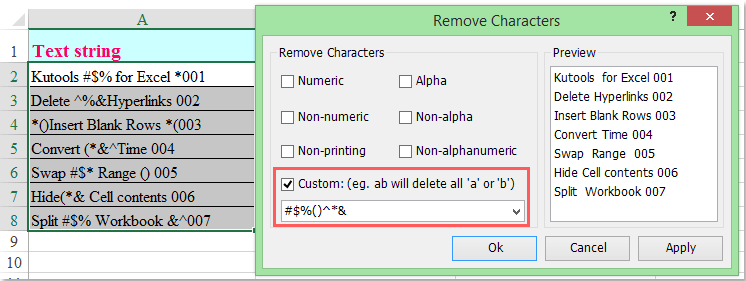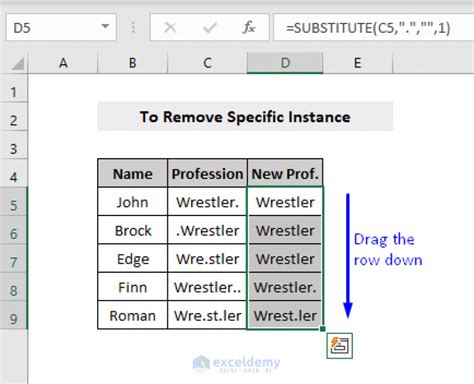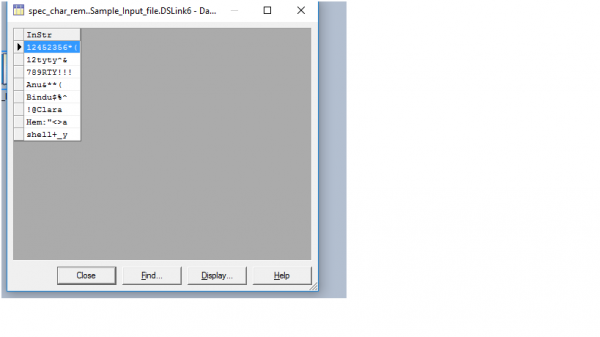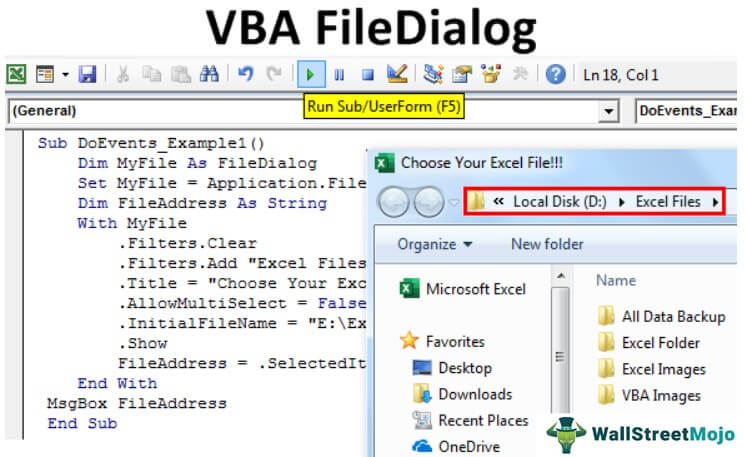3 Ways to Remove Special Characters

In data processing and programming, the need to remove special characters often arises. These characters, which include punctuation marks, symbols, and non-alphanumeric entities, can cause issues in various contexts, such as data analysis, text manipulation, and database operations. While some special characters may be essential for specific purposes, their removal is sometimes necessary to ensure data consistency, improve compatibility, or facilitate further processing. Here, we explore three effective methods to remove special characters, each offering unique advantages and considerations.
1. Regular Expressions: The Versatile Tool

Regular expressions, or regex, are powerful tools for pattern matching and manipulation of text data. They provide a flexible and precise way to identify and remove special characters. The beauty of regex lies in its ability to handle complex patterns and offer fine-grained control over the text processing.
Regex Syntax for Special Character Removal
To remove special characters using regular expressions, you can employ the \W metacharacter. This character represents any non-word character, which includes all special characters and digits. Here’s a basic regex pattern to achieve this:
import re text = "This is a text with $pecial #haracters!" cleaned_text = re.sub(r'\W+', '', text) print(cleaned_text) # Output: Thisisatestwithspecialharacters
In this example, the re.sub() function from Python's re module is used to substitute all occurrences of \W (non-word characters) with an empty string (''), effectively removing them from the original text.
Advantages and Considerations
- Precision: Regex offers an extremely precise way to target specific special characters or patterns.
- Flexibility: You can easily modify the regex pattern to include or exclude certain special characters.
- Efficiency: Regex can process large datasets quickly, making it suitable for high-volume text manipulation.
- Learning Curve: While powerful, regex has a steep learning curve and may require practice to master.
2. String Methods: Built-in Simplicity

Most programming languages offer built-in string methods that provide a more straightforward approach to removing special characters. These methods are often simple to use and require minimal code, making them an attractive choice for quick and basic text cleaning tasks.
Using the replace() Method
The replace() method is a common string manipulation tool in many programming languages. It allows you to substitute specific characters or patterns with another value. To remove special characters using this method, you can employ a loop to iterate through each character in the string and check if it’s a special character.
def remove_special_chars(text):
result = ""
for char in text:
if char.isalpha() or char.isdigit() or char.isspace():
result += char
return result
text = "This text has #special characters&"
cleaned_text = remove_special_chars(text)
print(cleaned_text) # Output: This text has special characters
In this Python example, the remove_special_chars() function uses a loop to construct a new string, result, by including only alphanumeric characters and spaces from the original text string.
Advantages and Considerations
- Simplicity: Built-in string methods are often straightforward and easy to understand.
- Performance: While efficient for small datasets, string methods may become slower with large volumes of text.
- Limited Flexibility: These methods may not offer the same level of customization as regex.
3. Data Normalization Techniques: A Comprehensive Approach
Data normalization is a broader concept in data processing that aims to standardize and clean data to ensure consistency and compatibility. When dealing with special characters, normalization techniques can provide a holistic solution, often addressing multiple aspects of data cleaning and formatting.
Applying Data Normalization for Special Character Removal
Data normalization techniques typically involve a series of steps to clean and standardize data. For special character removal, these steps might include:
- Character Set Conversion: Converting the text to a standardized character set, such as Unicode, can help ensure consistency and facilitate further processing.
- Special Character Identification: Identifying and categorizing special characters based on their purpose or type.
- Removal or Replacement: Depending on the context, special characters may be removed entirely or replaced with more appropriate characters.
- Data Validation: Validating the cleaned data to ensure it meets the desired criteria and is free from errors.
For example, in a database context, data normalization might involve using SQL queries to identify and remove special characters from specific columns. This approach ensures that the entire database adheres to a consistent standard.
Advantages and Considerations
- Comprehensiveness: Data normalization offers a holistic solution, addressing multiple aspects of data cleaning.
- Consistency: Normalized data is often more consistent and compatible with other systems.
- Complex Implementation: Data normalization techniques can be more complex to implement, especially in large-scale systems.
Conclusion
The methods outlined above provide a range of options for removing special characters, each suited to different contexts and requirements. Whether you opt for the precision of regular expressions, the simplicity of built-in string methods, or the comprehensiveness of data normalization techniques, understanding these approaches is essential for effective data processing and manipulation.
What are some common use cases for removing special characters?
+Special character removal is often necessary in data analysis, database operations, and text processing tasks. For instance, when preparing data for machine learning models, removing special characters can ensure consistency and improve model performance. Additionally, in web development, removing special characters from user inputs can enhance security and prevent potential vulnerabilities.
Are there any potential drawbacks to removing special characters?
+Yes, removing special characters may lead to data loss if those characters carry important information. For example, in certain languages, punctuation marks can indicate sentence structure or convey additional meaning. It’s crucial to consider the context and ensure that the removal of special characters doesn’t impact the integrity of the data.
Can I use multiple methods to remove special characters simultaneously?
+Absolutely! Depending on the complexity of your data and the specific requirements, you can combine multiple methods to achieve the desired result. For instance, you might use regex to target specific special characters and then employ data normalization techniques to ensure overall consistency.


